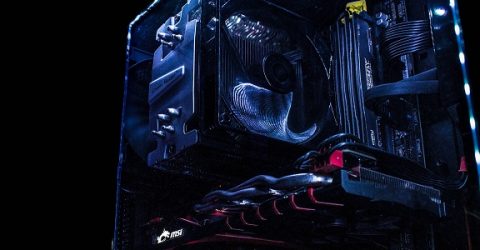What’s the difference between hardware, firmware and software?
The differences are confusing if you’re not technically minded, but there's less crossover than you might expect

To people unfamiliar with computers, their very operation might seem mysterious and intimidating.
From startup messages about BIOS and chipsets to the HTML code which appears if you press F12 in a web browser, computers barely disguise their incredible complexity.
One manifestation of this involves the combination of hardware, firmware and software which enables PCs and Macs to perform so many multimedia functions, often at once.
But where do these three distinct components intersect? And how do they combine to ensure computers can display webpages, run games and support productivity tools?
Hard times
Computer hardware is manufactured equipment – system resources you can physically touch.
From disc drives and hard drives to graphics cards and CPU chips, each piece of hardware performs one or more functions.
The motherboard supports communications between different components, while the fan disperses the heat generated by hard-working electronic equipment.
Individual pieces of hardware may wear or burn out, but they can often be replaced without affecting the performance or durability of other components.
Firm guidance
Hardware needs to be told what to do. A graphics processing unit is simply a collection of transistors, capacitors and silicon until firmware is installed.
Think of firmware as an intermediary between hardware and the software it runs.
Firmware generally operates behind the scenes and beyond the reach of end users. A wireless router has firmware embedded into it, but you can’t change it.
One similarity between firmware and software is that both require periodic updating, though firmware tends to perform one pre-ordained role throughout its life.
Soft sell
Software is any standalone program, installed to perform specific tasks or roles for either a whole system or an individual application.
Windows 10 and Mac OS X are examples of software, as is the web browser platform you’re reading this article on. Games, apps, utilities, antivirus packages… they’re all software.
Software can be installed and deleted without affecting the hardware or firmware which enables each program or application to load and run.
A device could have several competing software versions installed, all using the same hardware and firmware resources to perform the same job in subtly different ways.
Chrome, Firefox and Edge are rival web browsers with incompatible interfaces, but all three translate HTML text into user-friendly webpage content.
How do hardware, firmware and software interact?
Desktop and laptop computers have a uniquely complex relationship between hardware, firmware and software.
Software is prone to causing conflicts, as unique combinations of different software packages may have unforeseen consequences.
Most day-to-day IT issues are caused by problems with software, rather than firmware or hardware.
That’s because firmware tends to be pretty basic. Think about the program cycles on a washing machine, or the interface used by your smart TV.
By contrast, with a large enough hard drive (an example of hardware), a PC could support an infinite number of software programs being installed.






